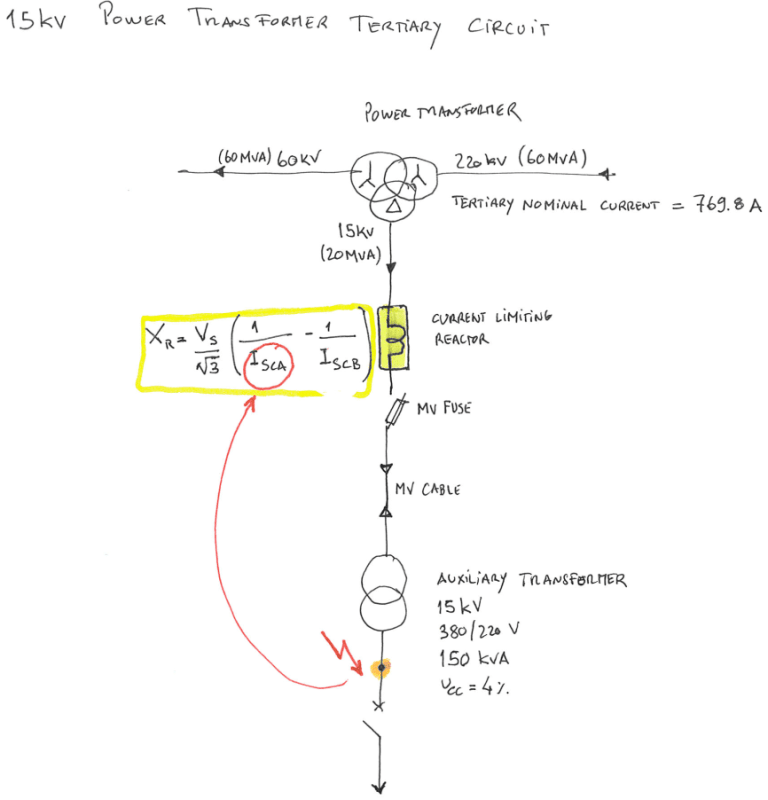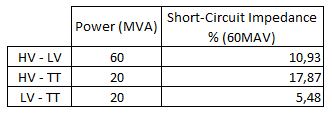Hi!
I need help to sizing a Current Limiting Reactor to be inserted in series in the Power Transformer Tertiary 15kV Circuit, as you can see in the attached file.
After checking several documents I found that I can sizing the Current Limiting Reactor by applying the following formula:
Xr = Vs/√3 ((1/Isca)-(1/Iscb))
Xr: the reactance of series reactor in ohms;
Vs: line-to-line rms voltage (kV);
Iscb: system fault rms current without the reactor (kA);
Isca: system fault rms current after using the reactor (kA).
In my case, I have:
Vs: 15kV
Iscb = 14,14kA (maximum short circuit current at the Power Transformer Tertiary terminals)
My problem is, where do I find the Isca value?
(could I consider in this case the three-phase short-circuit on the secondary side of the Auxliary Transformer, like indicated in the attached file?)
Another question is: what should be the continuous current rating of the Reactor?
Thank you in advanced
I need help to sizing a Current Limiting Reactor to be inserted in series in the Power Transformer Tertiary 15kV Circuit, as you can see in the attached file.
After checking several documents I found that I can sizing the Current Limiting Reactor by applying the following formula:
Xr = Vs/√3 ((1/Isca)-(1/Iscb))
Xr: the reactance of series reactor in ohms;
Vs: line-to-line rms voltage (kV);
Iscb: system fault rms current without the reactor (kA);
Isca: system fault rms current after using the reactor (kA).
In my case, I have:
Vs: 15kV
Iscb = 14,14kA (maximum short circuit current at the Power Transformer Tertiary terminals)
My problem is, where do I find the Isca value?
(could I consider in this case the three-phase short-circuit on the secondary side of the Auxliary Transformer, like indicated in the attached file?)
Another question is: what should be the continuous current rating of the Reactor?
Thank you in advanced


